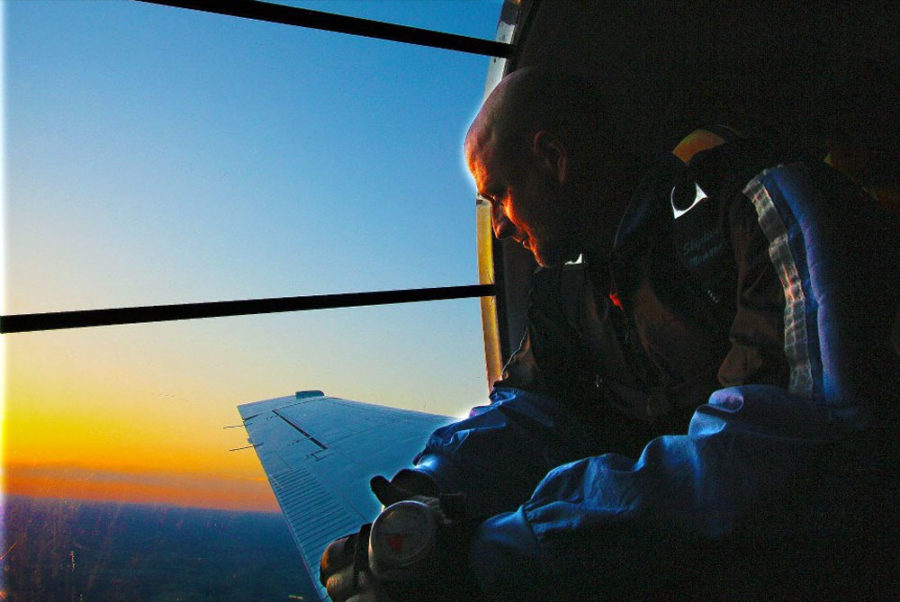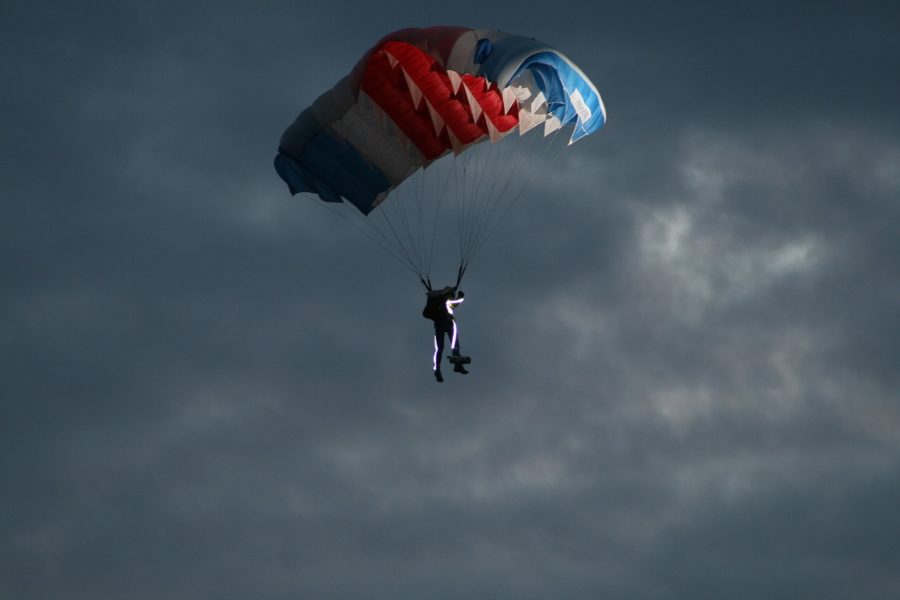There are few things more mysterious and captivating than the glimmering night sky. And as such, it makes sense that the bold and adventurous would be drawn to the possibility of nighttime skydiving. But can you skydive at night? Do people skydive in the dark? Yes! Skydiving at night is an exciting rite of passage for many experienced skydivers. If you’re surprised that night skydiving is a thing, read on to discover the incredible world of skydiving at night!
NightTime Skydiving Requirements
As you might imagine, night skydiving is a bit more complicated than jumping during the day. Because of this, the United States Parachute Association (USPA) has developed rules and regulations around night jumping to help mitigate the increased risk. Not just anyone can launch themselves out of an airplane in the dark!
 To participate in a night skydiving, you must:
To participate in a night skydiving, you must:
- Meet all the requirements for a USPA B license or higher
- Complete at least 50 jumps
- Accumulate at least 30 minutes of controlled freefall time
- Land within 33 feet of the target center on 10 jumps
- Complete 10 formation skydives with planned formations
- Complete live water landing training with full equipment
- Pass the written USPA B license exam
- Complete a comprehensive briefing and drill immediately before the intended night jump
- The training should be conducted by a USPA Safety & Training Advisor (S&TA), Examiner, or Instructor who has completed two-night jumps
- The training (including the date and location) should be documented in the jumper’s logbook and signed by the USPA S&TA, I/E, or Instructor
With all of this talk of restrictions, you may be wondering what is the latest you can skydive. Technically speaking, you can jump 24 hours a day. But there are requirements around what constitutes an official night skydive.
According to the USPA Skydiver Information Manual (SIM), any jumps completed between official sunset and official sunrise are considered night jumps. However, night skydiving done to establish world records or to attain certain certifications must take place between one hour after official sunset and one hour before official sunrise.
As you can see, we take night skydiving seriously. So, no surprise, night tandem skydiving is unfortunately not possible. But don’t fret – you can get your skydiving license if you really want to experience flying through the night sky!
What Makes Skydiving at Night Different?
Well, the most obvious answer is the darkness! But the experience is so much more than just flipping Mother Nature’s light switch. There’s a different buzz around jumping at night, especially for first-timers. Excitement and nerves mix to create a feeling akin to that of a first tandem skydive.
Everything from the ride in the airplane to the landing is charged with this heightened energy. The world looks different at altitude – a dark expanse as far as the eye can see, dotted with the twinkling lights of nightlife below. Everything seems somehow quieter, even in the 120 mph wind of freefall. Ambient noise seems to fall away, leaving only a peaceful, moonlit night – and you falling through it.
Accuracy during landing becomes even more important than it is during the day. Aiming for the lights of the dropzone – often illuminated by rows of car headlights – is key to a safe landing. Senses become heightened and even experienced jumpers experience a hyperfocus like never before. Skydiving at night doesn’t happen as often as day jumping, but it’s certainly a magical experience unlike anything else.
Safety Precautions for Night Skydiving
 Night jump planning goes beyond the rules and requirements set by the USPA – night-time skydiving requires some specialty equipment:
Night jump planning goes beyond the rules and requirements set by the USPA – night-time skydiving requires some specialty equipment:
- An altimeter with a phosphorescent (aka glow in the dark) face or a backlight for night visibility
- Clear goggles
- A flashlight to check the canopy after it opens
- A wearable light that is visible for at least three statute miles
- Glow sticks attached to skydivers’ arms and legs for visibility in freefall
Skydivers will also sit in the dark before boarding the airplane to allow their eyes to adjust to night vision, and the airplane is kept as dark as possible during the ride to altitude.
So if you can skydive any time day or night, when should you not skydive? While you technically can skydive at any time, dawn and dusk can be slightly more risky because transitional light makes it difficult to see. But the real concern is related to weather. Wind, clouds, and rain, day or night, are the main reasons skydivers would stay on the ground.
Where Can You Go Skydiving at Night?
Many dropzones host night skydiving during different parts of the skydiving season. Some dropzones only conduct night jumps as special events, while others can offer night jumps regularly.
Skydive Monroe hosts a variety of skydiving events throughout the year – including nighttime skydiving. Even if you’re not a skydiver, it’s truly awe-inspiring to watch glowing jumpers fly through the air and land in the dark. Don’t just take our word for it – consider this your invitation to our next event!
Why Try Night Skydiving?
The real question is, why not?? Night skydiving is yet another life-changing experience that skydiving has to offer. Skydiving at night helps build confidence, promotes camaraderie, introduces new skills, and, most importantly, is fun! Even if you’ve gone skydiving during the day, night skydiving is unlike anything you’ve done before. Anyone who loves the sky as much as we do should experience it at night.
Want to learn more about watching or participating in night jumps? Give us a call and discuss your options! And if day jumping sounds like excitement enough, come fly with us!
Copyright © 2025, Skydive Monroe, All Rights Reserved.
DropZone Web Design & Marketing by Beyond Marketing, LLC



